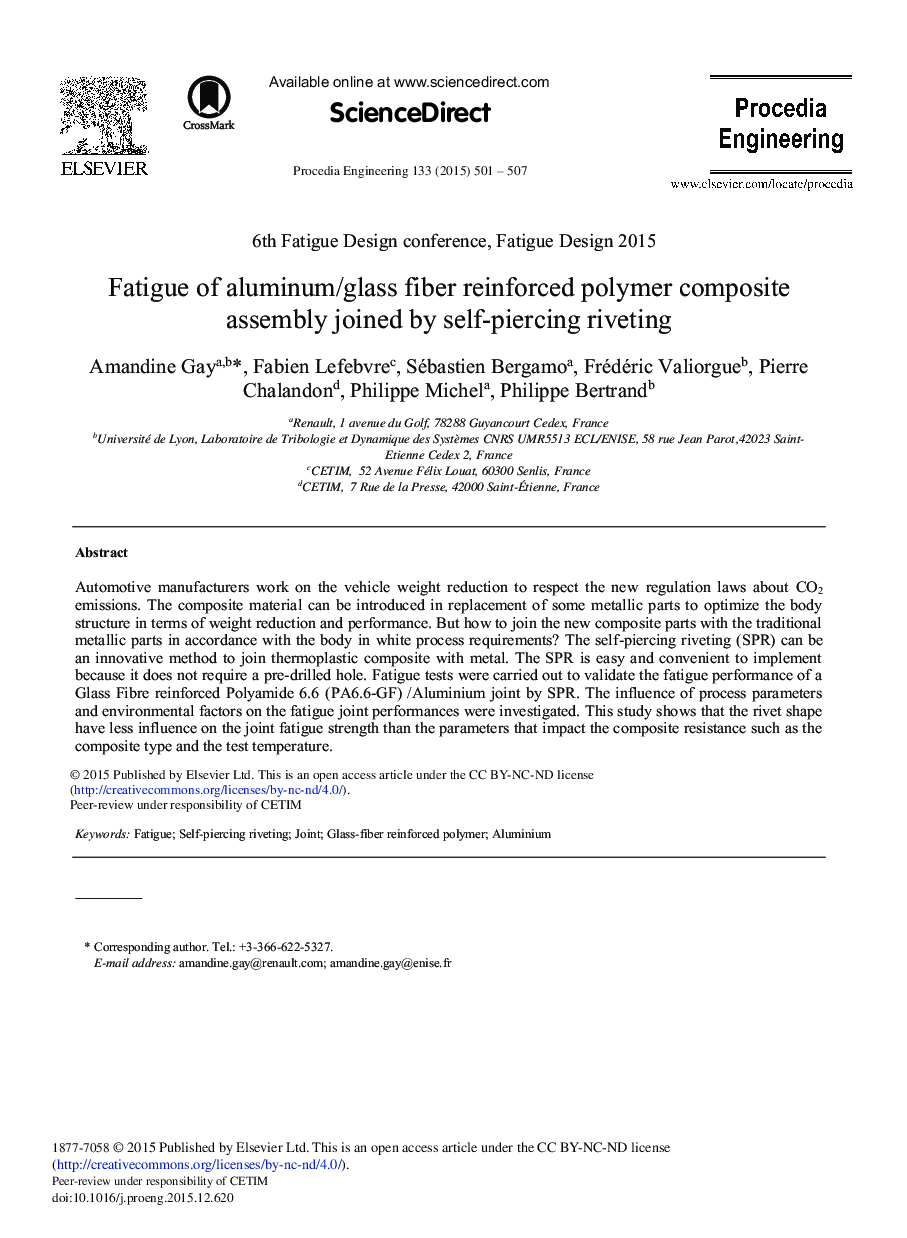| Article ID | Journal | Published Year | Pages | File Type |
|---|---|---|---|---|
| 853958 | Procedia Engineering | 2015 | 7 Pages |
Automotive manufacturers work on the vehicle weight reduction to respect the new regulation laws about CO2 emissions. The composite material can be introduced in replacement of some metallic parts to optimize the body structure in terms of weight reduction and performance. But how to join the new composite parts with the traditional metallic parts in accordance with the body in white process requirements? The self-piercing riveting (SPR) can be an innovative method to join thermoplastic composite with metal. The SPR is easy and convenient to implement because it does not require a pre-drilled hole. Fatigue tests were carried out to validate the fatigue performance of a Glass Fibre reinforced Polyamide 6.6 (PA6.6-GF) /Aluminium joint by SPR. The influence of process parameters and environmental factors on the fatigue joint performances were investigated. This study shows that the rivet shape have less influence on the joint fatigue strength than the parameters that impact the composite resistance such as the composite type and the test temperature.
